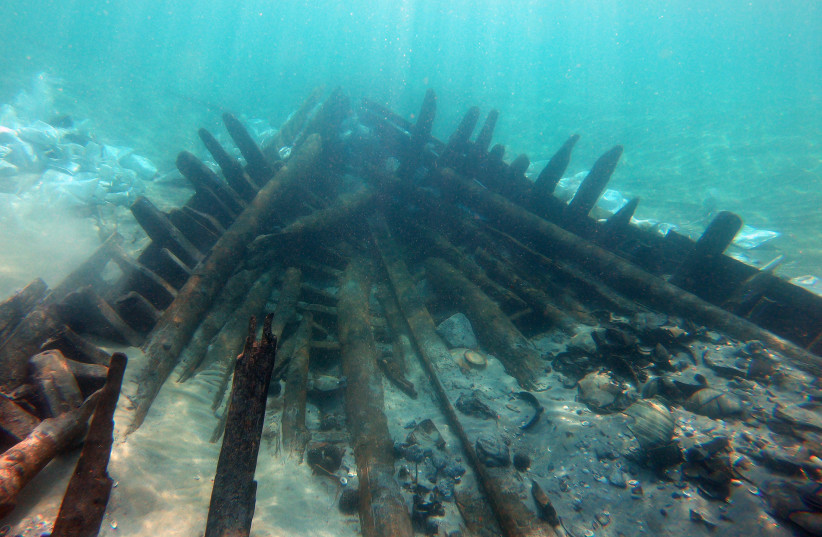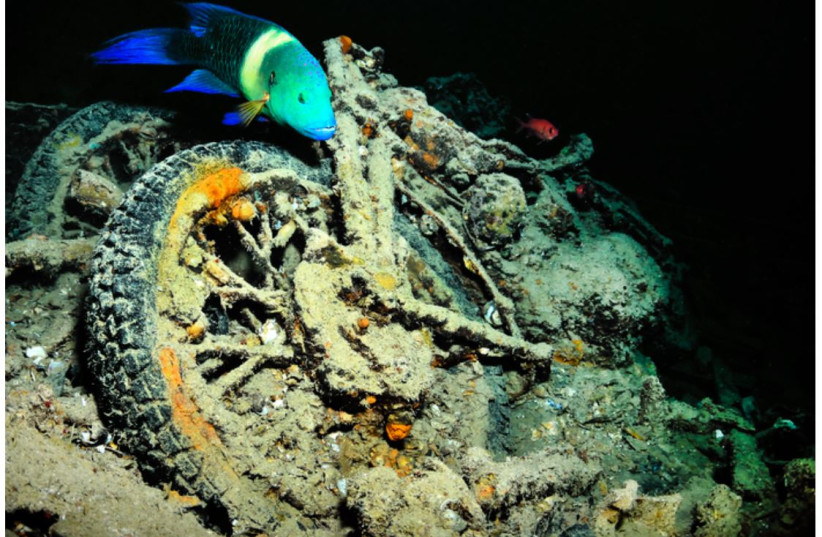A British merchant ship, that was sunken by Nazi bombers 80 years ago in the northern Red Sea, today serves as a thriving artificial coral reef.
Published: MARCH 16, 2023

(photo credit: A. YURMAN/LEON RECANATI INSTITUTE FOR MARITIME STUDIES OF THE UNIVERSITY OF HAIFA.)
The World War II shipwreck of the SS Thistlegorm in the northern part of the Red Sea is now a popular dive site and has formed an artificial coral reef for a diverse community of fish. The British merchant steamship was built in 1940 and was sunk by German bomber planes near Ras Mohammed a year later.
Volunteer divers have been gathering data on the revival of the coral reef on six different diving parameters for eight years.
Seventy years ago, French oceanographer and filmmaker Jacques Cousteau discovered the shipwreck’s remains after hearing about it from local fishermen. He pulled up a captain’s safe, a captain’s bell and a motorcycle from the wreck, which was 30 meters below the surface. But the site was then forgotten.
Three decades ago, Sharm e-Sheikh bounced back as a recreational diving resort after information was provided by the captain of an Israeli fishing boat. The huge explosion that sank the ship created a very accessible spot for divers to investigate, making it one of the top 10 shipwreck diving sites in the world.
Common interesting sea creatures living around the wreck include tuna, barracuda, batfish, moray eel, lionfish, stonefish, crocodile fish, scorpion fish and sea turtle.
A BSA M-20 motorcycle in a hold of the ship offers shelter to marine biodiversity. (credit: Wilfred Hdez, CC-BY 2.0)
Research findings
A team of Italian researchers published a study of its coral findings in the prestigious peer-reviewed journal PLOS under the title “Eight years of community structure monitoring through recreational citizen science at the ‘SS Thistlegorm’ wreck (Red Sea).”
“The biological communities of tropical and subtropical coral reefs support some of the highest biodiversity in the world and provide a wide array of socioeconomic services including coastal protection, water quality and chemical cycling, fisheries and materials markets like sponges, ornamental use and medicines, among others,” the researchers wrote.
It is one of the largest coral reef systems of the world, with notably high endemism (plant and animal species that are found in a particular geographical region and nowhere else in the world), and lies within the Red Sea.
“The northern Red Sea is considered a coral refuge because, although it has experienced some of the highest sea-surface temperature anomalies, there have been very few coral bleaching events compared to its southern portion,” they wrote.
Nevertheless, there is still evidence of general coral colony size decline and species homogenization throughout, so monitoring what lives there is very important.
“An innovative and upcoming approach to gathering large amounts of data in a time-efficient way is the practice of citizen science,” the report said. “This approach is not so novel in terms of human history, but current technological advances of citizen science in the spreading and sharing of information and data have benefits and uses that are now an integral part of modern science.”
Divers collected ecological community data with the help of active dive centers and trained guides throughout Egypt.
The SS Thistlegorm has recruited up to 175,000 visiting divers per year from around the world.
The team concluded that there was no clear shift of living things found at the site of the shipwreck during the eight years of monitoring, but there was some fluctuation driven mainly by yearly relative changes in the frequency of a few species.
This artificial reef is therefore a possible and promising area in which a population of Red Sea organisms can survive through a period of unfavorable conditions.
https://www.jpost.com/environment-and-climate-change/article-734542

